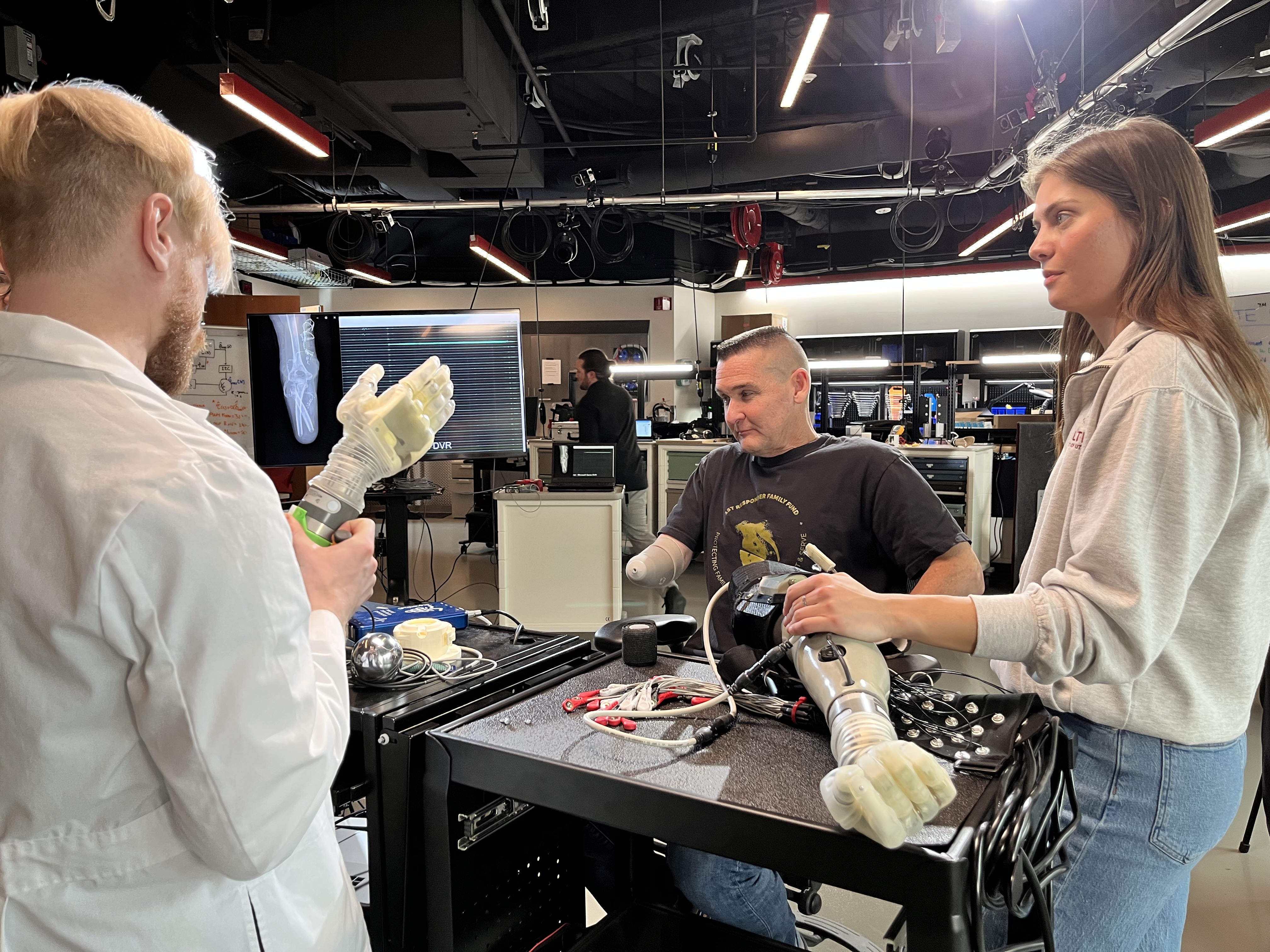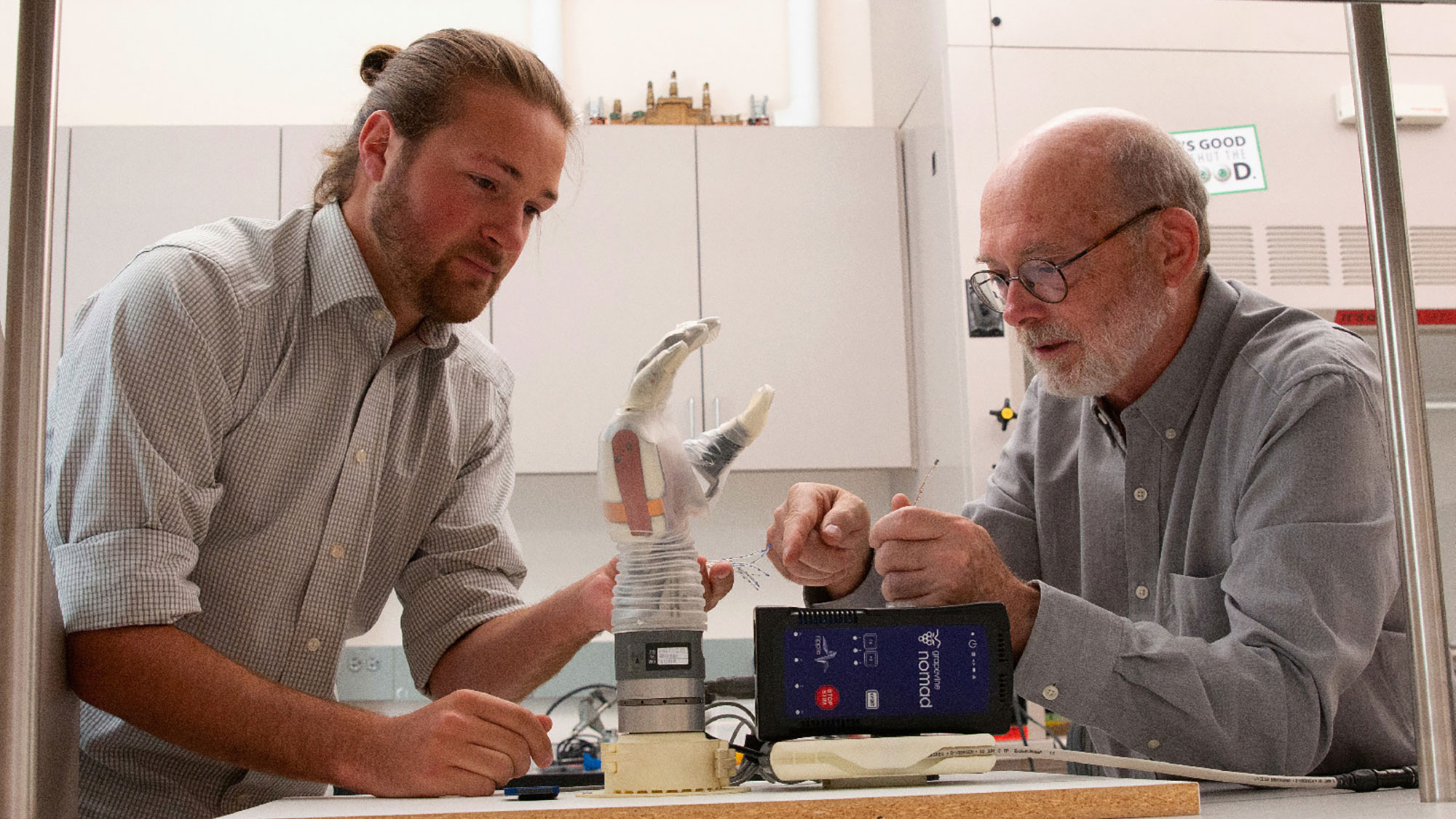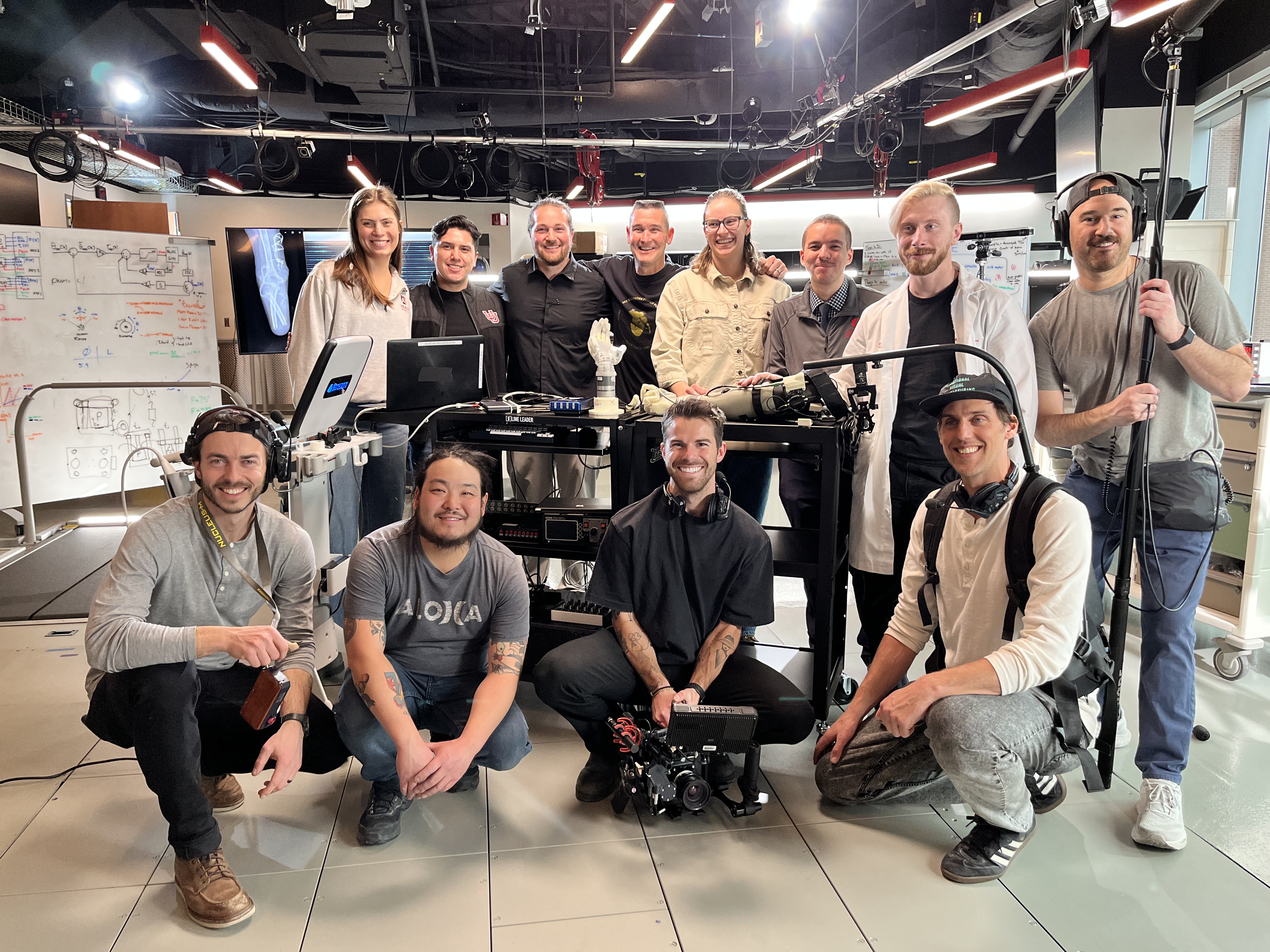The Utah NeuroRobotics Lab just received an additional $52,928 from Biologic Input Output Systems, Inc. to support the translational of the LUKE Arm Neuroprosthesis. This funding will support device testing and personnel to prepare for implanting a new amputee participant for a 1-year clinical trial. The next participant will take the LUKE Arm home and use it unsupervised in their day to day activities.
Dr. Jacob George Honored at U of U Health Celebrates Distinction 2025
We are proud to celebrate Dr. Jacob A. George, Assistant Professor of Electrical & Computer Engineering and Physical Medicine & Rehabilitation, who was recognized as a current endowed chair holder at the 2025 U of U Health Celebrates Distinction event.
Dr. George holds the Solzbacher-Chen Endowed Chair in the Department of Physical Medicine & Rehabilitation and the Department of Electrical & Computer Engineering — a distinction that honors his pioneering work at the intersection of rehabilitation robotics, sensorimotor neural engineering, and bioinspired artificial intelligence
His research focuses on developing advanced neural interfaces and prosthetic technologies that restore movement and sensation to individuals with limb loss or neurological conditions. This work is a driving force behind the development of cutting-edge systems like the LUKE arm and has also led to the creation of BIOS, a company spun out of our lab that was recently named an Innovation Awards honoree by Utah Business.
Through his leadership and groundbreaking research, Dr. George is helping redefine wha t’s possible at the intersection of engineering, neuroscience, and patient care — improving quality of life and expanding the future of neurotechnology.
New Clinical Trial for Upper-Limb Exoskeleton
New Digital Health Initiative Grant
Dr. George Appointed Solzbacher-Chen Endowed Professor
New Collaborative NSF Grant
Sci-Fi Tech Helping Veterans: University of Utah’s LUKE Arm on Fox 13
Fox 13 explores how the LUKE Arm, developed at the University of Utah, is transforming the lives of veterans. This segment delves into the real-world impact of the bionic prosthetic, emphasizing how cutting-edge research is making a tangible difference for those who need it most.
Sci-Fi Becomes Reality: LUKE Arm Showcased at the Big Game
Hoodline magazine highlights how the LUKE Arm took center stage at one of the biggest sporting events of the year. With its groundbreaking prosthetic technology, the LUKE Arm is pushing the boundaries of what’s possible, bringing a once sci-fi concept into real-world use.
Cutting-Edge Robotics: LUKE Arm Featured at the Big Game
@theU covers the LUKE Arm’s high-profile appearance at the big game, showcasing its advanced capabilities and life-changing impact. This moment marks a significant milestone in the public recognition of revolutionary prosthetic technology developed at the University of Utah.
LUKE Arm Takes the Spotlight: Super Bowl, Science, and American Innovation
Fox Sports covers Super Bowl LIX with a unique twist—highlighting how innovation, including the LUKE Arm, represents the spirit of progress and resilience. Even Hollywood icon Brad Pitt took a moment to reflect on what technological advancements like this mean for the future of America.
















